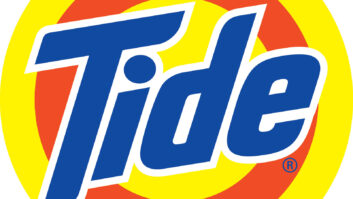STOCKHOLM, SWEDEN – Keith McLoughlin is in the catbird seat.
The president/CEO of Electrolux has just negotiated a buyout of GE’s venerable appliance business, and the $3.3 billion deal will give his company global parity with No. 1 majap maker Whirlpool.
The acquisition will also shore up breaches in the U.S. business, ostensibly in laundry, refrigeration and logistics, and provide a deep bench and long pipeline of R&D talent and innovation.
TWICE recently spoke with the Long Island, N.Y., native, who ran the company’s North American business before assuming the corner office in Stockholm.
TWICE: Is it too early to congratulate you? You still have some regulatory hurdles ahead.
Keith McLoughlin, Electrolux: We signed the deal, and we think it will go through based on our own analysis. We’re anticipating a mid-2015 close.
GE’s sales are 90 percent U.S.- based, and the competition here has increased with the entrance of LG and Samsung. Our combined share will be pretty close to Whirlpool’s in the U.S. and worldwide, with global sales of $23 or $24 billion.
TWICE: How do you go about integrating these two large enterprises, and avoid the problems Whirlpool had in assimilating Maytag?
McLoughlin: GE Appliance is a very healthy business and invested about a billion dollars in new products and platforms, so that helps.
You have to find the synergies, find the best of each, and figure out how to make one-plus-one equal three. It’s easy to say and hard to do.
Both companies are relatively comparable, and complementary: Our U.S. sales are $5.3 billion and GE’s are $5.7 billion. We both have 11,000 to 12,000 employees. Our residential business is strong; GE’s contract business is strong. GE is strong in mass premium, and we have the Frigidaire mass brand and Electrolux in premium.
It will probably take three to four years to fully integrate the two businesses.
TWICE: What else made it attractive to you?
McLoughlin: GE has a world-class distribution capability, and well-trained, professional people. It’s a well-run business with lots of intellectual capital — our U.S. R&D team will quadruple in size — and it’s a good financial fit, as the appliance business is material intensive but not capital intensive, so there’ll be cost synergies.
GE also has 48 percent equity in Mabe, which is the No. 1 appliance manufacturer in Mexico, a market where we had been weak. This is a big, historic and significant play in the U.S., but we also plan to strengthen our balance sheet to grow globally, and will triple our firepower in emerging markets.
TWICE: The purchase price was higher than speculated. Did you get a good deal?
McLoughlin: We paid 7.5 times earnings, which is a fair price for the shareholders.
TWICE: What’s been the customers’ reaction?
McLoughlin: We’ve had more positive reaction from retailers than negative. They understand that this means more research, more innovation, and greater investment in the brand, which will help grow the market.
Jack [Truong, head of Electrolux’s North America business] and Chip [Blakenship, head of GE Appliance] will be talking to all the customers. I would hope their response will be positive.
TWICE: What about The Home Depot? They have a special relationship with GE.
McLoughlin: We know Home Depot and they know us. We’re not a stranger.
TWICE: What’s your game plan for the combined brand portfolio?
McLoughlin: We have some work to do on brand architecture and we have the time to do it.
TWICE: Are there any manufacturing redundancies?
McLoughlin: There are some opportunities for consolidation.
TWICE: You mentioned Jack and Chip. Who’s going to run the combined business?
McLoughlin: We haven’t made any decisions on personnel.
TWICE: Where will the business be headquartered?
McLoughlin: Charlotte [home base of Electrolux North America] will be headquarters. It’s relatively close to Louisville.
TWICE: On a different note, what’s your short- and long-term outlook for the industry?
McLoughlin: The industry will be up 4 percent for the year. We won’t get back to the extreme levels of mid-2006, nor should we. That wasn’t real, and those days are gone.
But we still have population growth in the U.S., which is one of the few Western countries experiencing that, so there’s organic demand. Long-term the business can grow 2 to 3 percent a year, and that’s fine.













